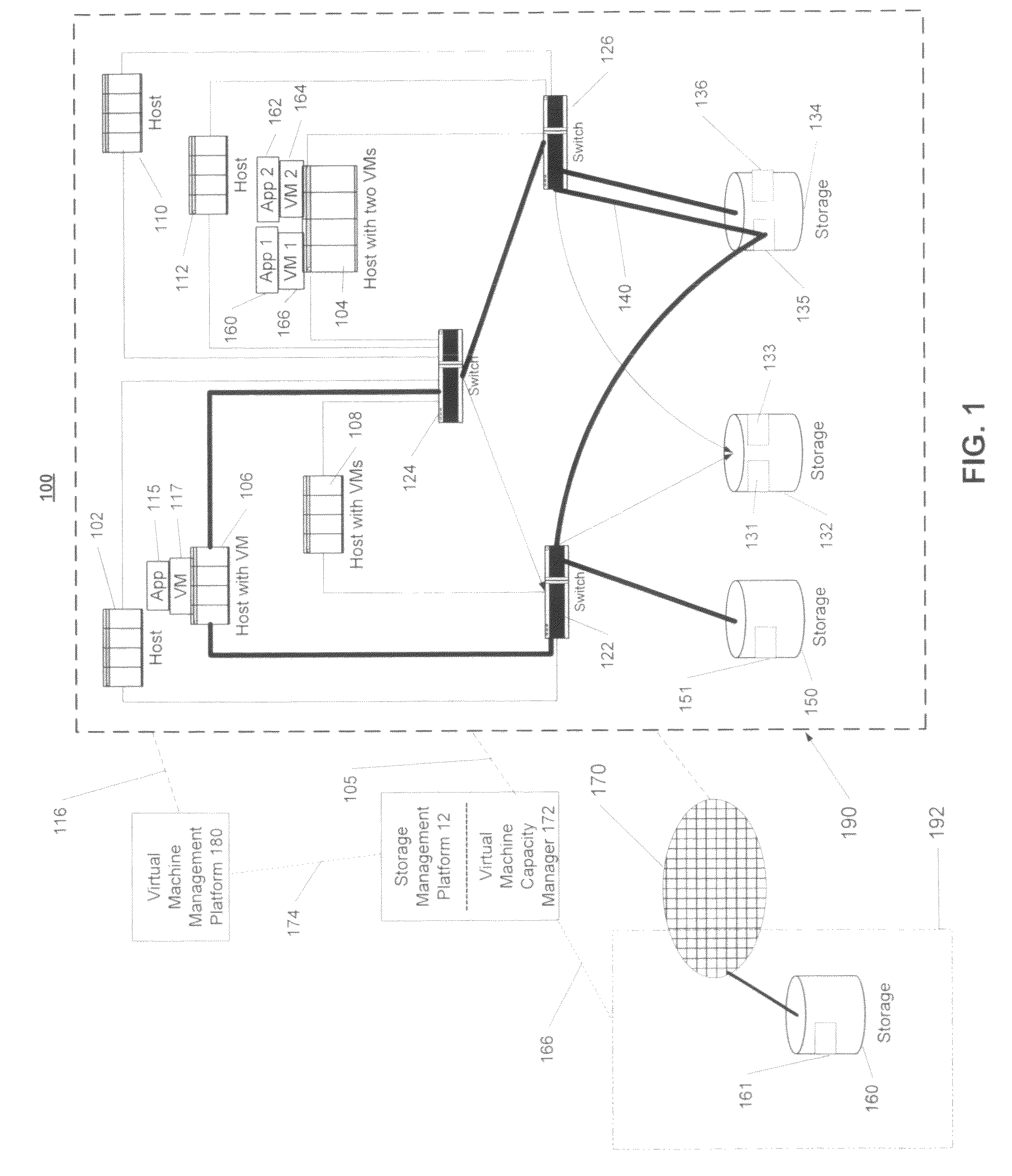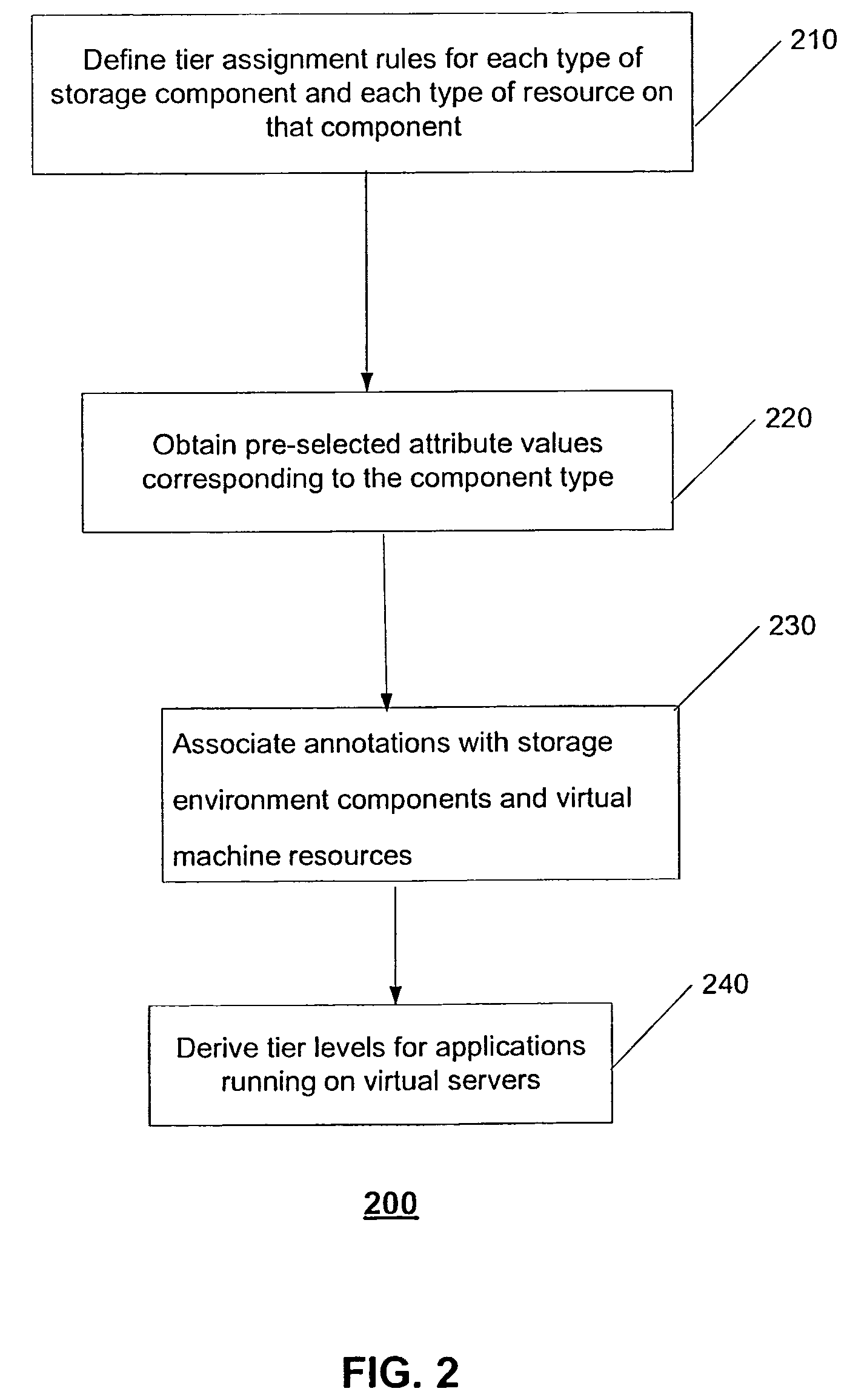Systems and methods for path-based management of virtual servers in storage network environments
- Summary
- Abstract
- Description
- Claims
- Application Information
AI Technical Summary
Benefits of technology
Problems solved by technology
Method used
Image
Examples
exemplary embodiment 1100
[0145]FIG. 11 illustrates an exemplary embodiment 1100 of the virtual machine capacity management process 1000 of FIG. 10C in response to an occurrence of a change event, such as virtual machine change event 1006 of FIG. 10C. The capacity management process 1000 first determines, at step 1102, the nature of the virtual machine change event 1006 in order to formulate the appropriate actions to such an event. The process 1000 then determines, at steps 1104 and 1106, one or more applications and resources in a data network that may be affected by the virtual machine change event. At step 1108, the process 1000 reserves the selected virtual machine resources, of appropriate types and tiers, in a reservation system corresponding each of the identified applications. The reservation system may be configured to prevent double reservation of the virtual machine resources by parallel change processes. Furthermore, at step 1110, process 1000 executes the allocation virtual machine change event...
exemplary embodiment 1200
[0149]FIG. 12 illustrates an exemplary embodiment 1200 of the process 1000 at the reconciliation stage 1006 of FIG. 10C. The virtual machine capacity manager 172 of FIG. 1 first (step 1208) performs the virtual machine capacity assessment process described above in FIG. 11. Process 1000 proceeds by comparing the current virtual machine status generated at step 1208 of FIG. 12 with a projected status of virtual machine resource association generated from the projection stage 1002 of FIG. 10C. In one embodiment, the comparison is performed in an application-centric mariner. For example, the association value that tracks each type and tier of allocated and reserved virtual machine resource corresponding to an application may be compared, at step 1210, to the estimated level of capacity stored in an expected-resource requirement policy for that application. This comparison thus allows a user to evaluate virtual machine capacity association from an application-oriented perspective. In an...
PUM
 Login to View More
Login to View More Abstract
Description
Claims
Application Information
 Login to View More
Login to View More - R&D
- Intellectual Property
- Life Sciences
- Materials
- Tech Scout
- Unparalleled Data Quality
- Higher Quality Content
- 60% Fewer Hallucinations
Browse by: Latest US Patents, China's latest patents, Technical Efficacy Thesaurus, Application Domain, Technology Topic, Popular Technical Reports.
© 2025 PatSnap. All rights reserved.Legal|Privacy policy|Modern Slavery Act Transparency Statement|Sitemap|About US| Contact US: help@patsnap.com



